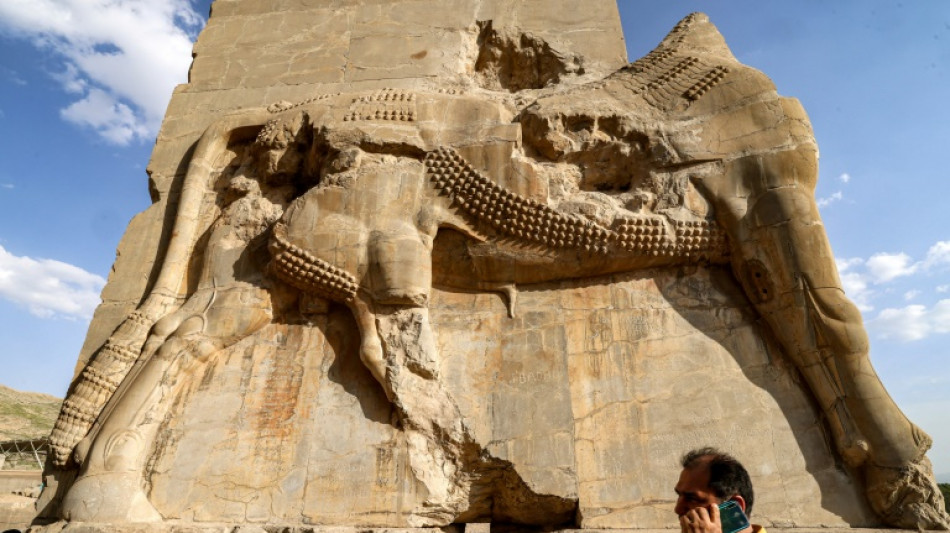
-
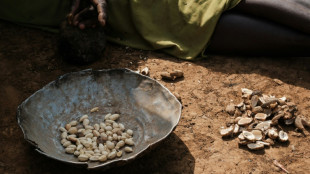 Trapped, starving and afraid in besieged Sudan city
Trapped, starving and afraid in besieged Sudan city
-
Showdown looms as EU-Mercosur deal nears finish line
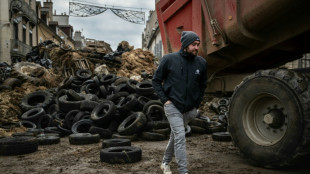
-
 Messi mania peaks in India's pollution-hit capital
Messi mania peaks in India's pollution-hit capital
-
Wales captains Morgan and Lake sign for Gloucester

-
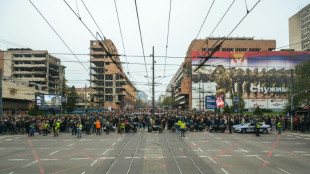 Serbian minister indicted over Kushner-linked hotel plan
Serbian minister indicted over Kushner-linked hotel plan
-
Eurovision 2026 will feature 35 countries: organisers

-
 Cambodia says Thailand bombs province home to Angkor temples
Cambodia says Thailand bombs province home to Angkor temples
-
US-Ukrainian talks resume in Berlin with territorial stakes unresolved

-
 Small firms join charge to boost Europe's weapon supplies
Small firms join charge to boost Europe's weapon supplies
-
Driver behind Liverpool football parade 'horror' warned of long jail term

-
 German shipyard, rescued by the state, gets mega deal
German shipyard, rescued by the state, gets mega deal
-
Flash flood kills dozens in Morocco town
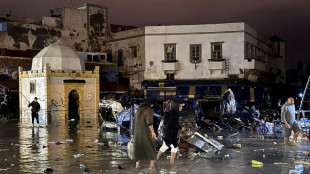
-
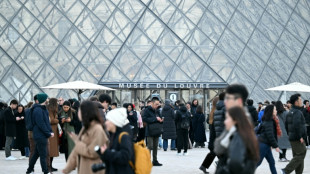 'We are angry': Louvre Museum closed as workers strike
'We are angry': Louvre Museum closed as workers strike
-
Australia to toughen gun laws as it mourns deadly Bondi attack

-
 Stocks diverge ahead of central bank calls, US data
Stocks diverge ahead of central bank calls, US data
-
Wales captain Morgan to join Gloucester

-
 UK pop star Cliff Richard reveals prostate cancer treatment
UK pop star Cliff Richard reveals prostate cancer treatment
-
Mariah Carey to headline Winter Olympics opening ceremony

-
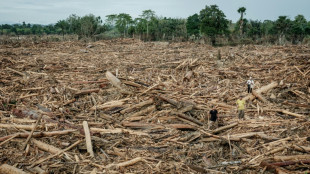 Indonesia to revoke 22 forestry permits after deadly floods
Indonesia to revoke 22 forestry permits after deadly floods
-
Louvre Museum closed as workers strike
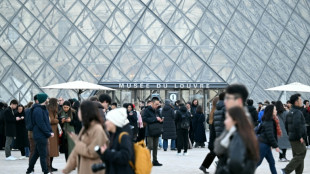
-
 Spain fines Airbnb 64 mn euros for posting banned properties
Spain fines Airbnb 64 mn euros for posting banned properties
-
Japan's only two pandas to be sent back to China

-
 Zelensky, US envoys to push on with Ukraine talks in Berlin
Zelensky, US envoys to push on with Ukraine talks in Berlin
-
Australia to toughen gun laws after deadly Bondi shootings

-
 Lyon poised to bounce back after surprise Brisbane omission
Lyon poised to bounce back after surprise Brisbane omission
-
Australia defends record on antisemitism after Bondi Beach attack

-
 US police probe deaths of director Rob Reiner, wife as 'apparent homicide'
US police probe deaths of director Rob Reiner, wife as 'apparent homicide'
-
'Terrified' Sydney man misidentified as Bondi shooter
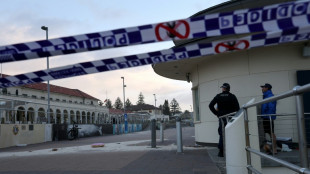
-
 Cambodia says Thai air strikes hit home province of heritage temples
Cambodia says Thai air strikes hit home province of heritage temples
-
EU-Mercosur trade deal faces bumpy ride to finish line
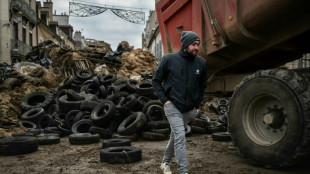
-
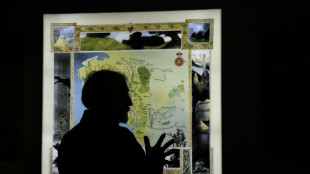 Inside the mind of Tolkien illustrator John Howe
Inside the mind of Tolkien illustrator John Howe
-
Mbeumo faces double Cameroon challenge at AFCON

-
 Tongue replaces Atkinson in only England change for third Ashes Test
Tongue replaces Atkinson in only England change for third Ashes Test
-
England's Brook vows to rein it in after 'shocking' Ashes shots

-
 Bondi Beach gunmen had possible Islamic State links, says ABC
Bondi Beach gunmen had possible Islamic State links, says ABC
-
Lakers fend off Suns fightback, Hawks edge Sixers

-
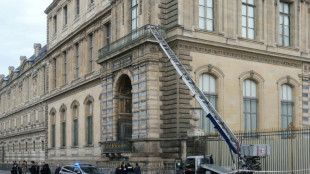 Louvre trade unions to launch rolling strike
Louvre trade unions to launch rolling strike
-
Far-right Kast wins Chile election landslide

-
 Asian markets drop with Wall St as tech fears revive
Asian markets drop with Wall St as tech fears revive
-
North Korean leader's sister sports Chinese foldable phone

-
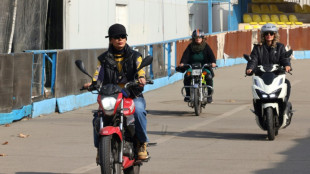 Iran's women bikers take the road despite legal, social obstacles
Iran's women bikers take the road despite legal, social obstacles
-
Civilians venture home after militia seizes DR Congo town

-
 Countdown to disclosure: Epstein deadline tests US transparency
Countdown to disclosure: Epstein deadline tests US transparency
-
Desperate England looking for Ashes miracle in Adelaide

-
 Far-right Kast wins Chile election in landslide
Far-right Kast wins Chile election in landslide
-
What we know about Australia's Bondi Beach attack

-
 Witnesses tell of courage, panic in wake of Bondi Beach shootings
Witnesses tell of courage, panic in wake of Bondi Beach shootings
-
Chiefs out of playoffs after decade as Mahomes hurts knee

-
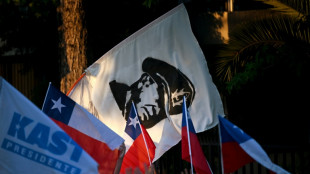 Chilean hard right victory stirs memories of dictatorship
Chilean hard right victory stirs memories of dictatorship
-
Volunteers patrol Thai villages as artillery rains at Cambodia border
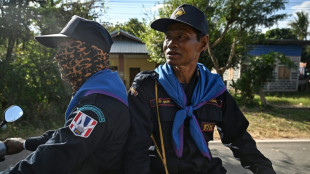

The stone-eaters that threaten Iran's ancient Persepolis
Conservationists at Persepolis, Iran's most iconic ancient site, are waging a delicate battle against an unlikely adversary: tiny but persistent lichens eroding the millennia-old monuments.
The fight, which began years ago, is aimed at stopping the threat to the integrity of the site's structures and its intricate carvings from lichens, organisms that grow on surfaces like stone and can slowly break them down over time.
Built in the 6th century BC by Darius I, Persepolis has withstood destruction, looting, earthquakes, fires and harsh weather. It remains a source of pride for Iranians and a major tourist destination.
"It's an open-air museum reflecting 25 centuries of Middle Eastern life," said Alireza Asgari Chaverdi, director of the site located about 50 kilometres (30 miles) from the southern city of Shiraz.
"It is the foundation of Iran's history, culture and socio-cultural life."
A UNESCO World Heritage Site since 1979, Persepolis features colossal sculptures and intricate stone reliefs of ancient Persian kings, nobles and deities.
But these have suffered over the years from lichen, a combination of an algae and a fungus.
"This is the most serious problem, especially for carvings on stones," said Shahram Rahbar, a conservationist at the site.
"If we do nothing, these organisms could reduce these relics to dust within 50 to 100 years," he said as he treated lichen growth on one slab.
- Lost motifs -
Red lichen marks are now etched into many of the ancient relics at Persepolis.
The spread of lichens, which dissolve minerals and penetrate stone surfaces by more than 1.5 centimetres (.6 inches), is driven by industrialisation, acid rain and the harsh desert climate, said lichenologist Mohammad Sohrabi.
"We cover the lichens with a material and, after a week, repeat the process until they weaken enough to be removed with suction devices," said Rahbar.
Iran is home to more than 3,000 species of lichens, with 500 to 700 varieties growing on historical monuments, Sohrabi said, noting that some at Persepolis were over 1,700 years old.
"Many of Persepolis's intricate motifs have already been lost due to lichen activity," he said.
Beyond Persepolis, other sites in Iran, like the Bisotun inscription in Kermanshah province, have also been affected.
Bisotun, another UNESCO World Heritage Site, features a massive carved inscription recounting the conquests of King Darius I and has suffered significant degradation due to lichen growth.
- 'More important than our lives' -
At Persepolis, Rahbar and his team work relentlessly to combat the infestation.
"We destroy the lichens using modern techniques like lasers and substances that act like antibiotics," Rahbar said, describing what he called a "painstaking" process.
Public concern grew after an official highlighted a lack of funds for preserving Iran's historic sites.
Iran's deputy culture minister, Ali Darabi, said the annual budget for restoring each monument was only 130 million rials (about $220), while maintaining all registered historical monuments would require nearly $84 million a year.
As Mohsen, a 41-year-old retiree from Ghazvin, stood before a ruined column of the Apadana palace, he said, "Maintaining this site is more important than our lives."
Ghashghaei, an 82-year-old retiree visiting with his family, agreed.
For him, the site stands as a poignant reminder that "Iranians created an ancient civilisation," he said.
M.A.Colin--AMWN


